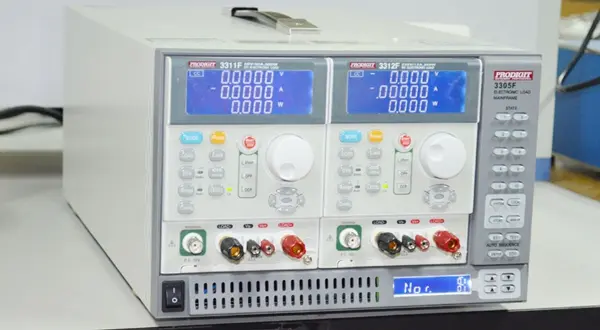
What is Brazil Anatel Homologation?
Brazil's National Telecommunications Agency (ANATEL) is responsible for ANATEL Homologation, a regULatory system for telecommunications equipment, radio equipment, and certain wiRED devices entering the Brazilian market. This Homologation is also a national market access system in Brazil.

Basic Information of Brazil ANATEL Homologation:
- Issuing Authority: National Telecommunications Agency (ANATEL); Brazilian third-party Homologation organizations (OCD)
- Testing Organizations: Designated local testing laboratories in Brazil
- Testing Contents: RF, electromagnetic compatibility, electromagnetic radiation, electrical safety
- Mandatory/Voluntary: Mandatory
- Factory Inspection: Not required
- Local Representative: Required (a company registered in Brazil)
- Validity Period:
- Class I Equipment: 1 year (e.g., 2G/3G/4G communication equipment such as mobile phones, batteries, adapters)
- Class II Equipment: 2 years (e.g., Bluetooth and Wi-Fi wireless devices such as Bluetooth speakers, Bluetooth headsets)
- Class III Equipment: 5 years (e.g., switches, routers)
Common Testing Standards for Brazil ANATEL Homologation:
- 3GPP TS 51.010-1 V6.5.0: GSM Radio Test
- ETSI TS 134 121-1 V9.1.0: WCDMA Radio Test
- 3GPP TS 36.521-1 V9.5.0: LTE Radio Test
- Act No.1120 - 2018: Electromagnetic Compatibility
- cL Ne. 950 - 2018: Electrical Security (Safety)
- Act No.14448 - 2017: Requirements for Restricted Radiation Equipment
- Act No.955 - 2018: SAR - Specific Absorption Rate
- Act No.3481 - 2019: EMC and Safety
- Act No.3484 - 2019: Safety for Li-ion Battery and Cell
Product Range for Brazil ANATEL Homologation:
- 2G/3G/4G Communication Equipment: Including base stations, mobile phones, public data terminals, etc.
- Mobile Accessories: Including batteries, chargers, wireless chargers, power banks, car chargers, etc.
- Bluetooth Devices: Including Bluetooth headsets, Bluetooth speakers, Bluetooth bracelets, Bluetooth communication control devices, etc.
- Wi-Fi Devices: Including wireless routers, wireless access points, wireless cameras, tablets, etc.
- Fixed Telecommunications Terminal Equipment: Including fixed wired phones, fixed cordless phones, modems, set-top boxes, etc.
- Fixed Telecommunications Connection Equipment: Including switches, routers, repeaters, hubs, etc.
- Fixed Telecommunications Cables: Including network cables, optical fibers, etc.
Required Documents for Brazil ANATEL Homologation:
1. Testing application form
2. Authorization letter: Manufacturer authorizes a local Brazilian company
3. Manufacturer's ISO certificate: Must cover the product category being applied for
4. Product user manual: In Portuguese (including warning statements)
5. Technical specifications
6. Circuit diagrams
7. Antenna gain values
8. Product label: In Portuguese
9. Frequency setting documentation: Required for Bluetooth and Wi-Fi devices
Brazil ANATEL Homologation Process:
1. The applicant submits application documents and samples to JJRLAB: The number of samples depends on the product.
2. Case establishment
3. Project engineer confirms samples and reviews documents: Bluetooth or Wi-Fi products require frequency setting.
4. Pre-testing at Bluetek: Rectification required if the test fails.
5. Product information and shipping invoice number provided to the Homologation body, issuance: Customs clearance statement for testing, mail time required is 7-10 days.
6. Laboratory testing: Testing takes 5-10 working days, may require scheduling.
7. Laboratory edits and reviews the report.
8. Brazilian third-party organization issues a conformity statement.
9. ANATEL registration: Brazilian local partner pre-issues ANATEL number.
10. Manufacturer edits product label based on the number.
11. Registration complete.
Our Brazilian certification prices have huge advantages and can help you save 40% of certification costs. Welcome to get a quote.
Email:hello@jjrlab.com
Write your message here and send it to us
 WEEE Registration for Waste Electrical &Electr
WEEE Registration for Waste Electrical &Electr
 MSDS Chemical Safety Testing
MSDS Chemical Safety Testing
 What Are the Differences Between UK REACH and EU R
What Are the Differences Between UK REACH and EU R
 E-Cigarette GB 41700 Compliance Testing
E-Cigarette GB 41700 Compliance Testing
 What Are the Testing Items of California Propositi
What Are the Testing Items of California Propositi
 E-Cigarette EU TPD Testing
E-Cigarette EU TPD Testing
 Testing Certification for E-cigarettes Exported to
Testing Certification for E-cigarettes Exported to
 What is Amazon US CPC Certification?
What is Amazon US CPC Certification?
Leave us a message
24-hour online customer service at any time to respond, so that you worry!




